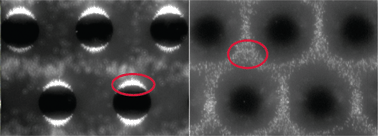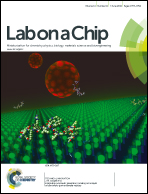Dielectrophoresis-based purification of antibiotic-treated bacterial subpopulations†
Abstract
Persistence of bacteria during antibiotic therapy is a widespread phenomenon, of particular importance in refractory mycobacterial infections such as leprosy and tuberculosis. Persistence is characterized by the phenotypic tolerance of a subpopulation of bacterial cells to antibiotics. Characterization of these “persister” cells is often difficult due to the transient, non-heritable nature of the phenotype and due to the presence of contaminating material from non-persisting cells, which usually comprise the larger fraction. In this study, we use 3D carbon-electrode arrays for dielectrophoresis-based separation of intact cells from damaged cells, revealed by differential staining with propidium iodide, and we use this procedure to purify intact cells from cultures of Mycobacterium smegmatis treated with isoniazid, a frontline anti-tuberculosis drug. The method presented in this study could be used for rapid label-free enrichment of intact persister cells from antibiotic-treated cultures while preserving the metastable persister phenotype. This approach would facilitate the downstream analysis of low-frequency subpopulations of cells using conventional omics techniques, such as transcriptomic and proteomic analysis.


 Please wait while we load your content...
Please wait while we load your content...